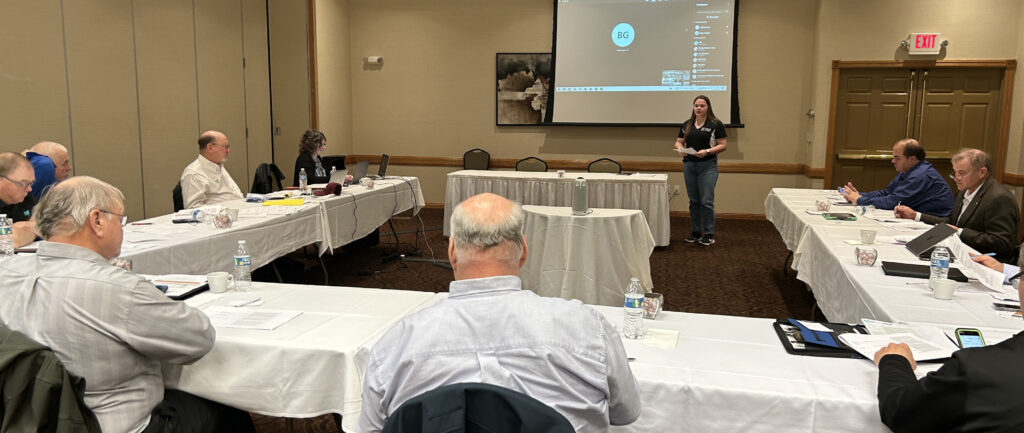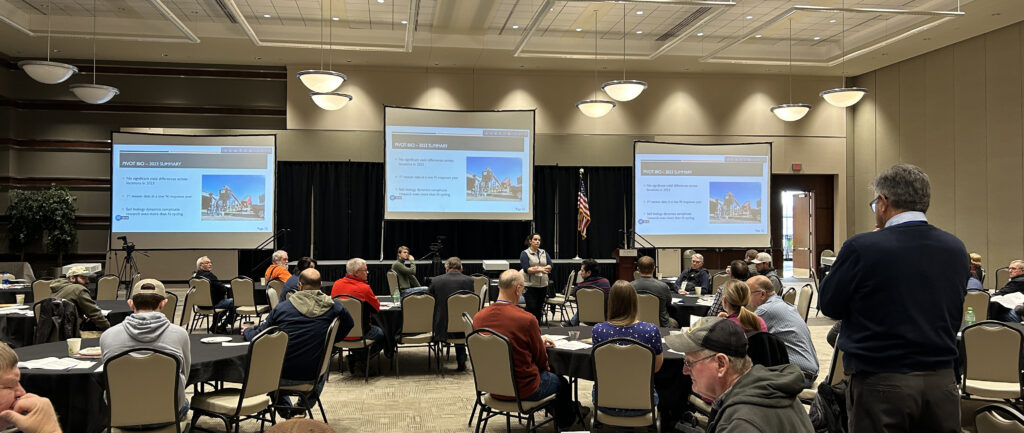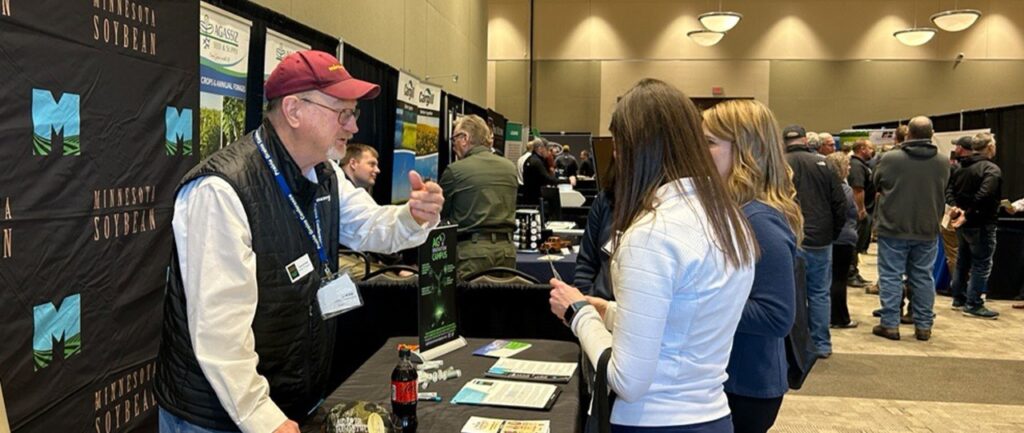As I traveled from Big Iron in Fargo, N.D., last week, it became very obvious weeds are still a problem in Minnesota. One could easily spot the Waterhemp, Kochia, Giant Ragweed, and other weeds towering over the steadily senescing soybeans beneath. While not all were towering over the corn, their ominous presence was evident throughout the state.
What can a farmer do? Right now the weeds are present and control is not an option. However, you can scout your field, map the problem and prepare for the future. You can also determine if a harvest aid such as Gramoxone TM (paraquat) would be a viable option. The aid may also make harvesting somewhat easier. A harvest aid will not control existing weeds for this harvest. They may impact weed seed viability, helping reduce the impact of the weed next year.
When scouting, note the location, weed identity, stage of growth (vegetative or reproductive) and weed density. In the combine, you can use your yield monitor, as some offer “flags” or other codes to delineate. The geo-referenced marks and notes are beneficial after harvest when analyzing yield maps and other imagery, which may be helpful in turning data into decisions. As you walk or ride the field, note locations of weeds on the perimeters, especially fence lines, drainage ditches and areas bordering newly sown conservation plantings. Recently, information from Iowa indicates some of the glyphosate resistant weeds have been found in these sites. This would also be a good time to map buckthorn and other problematic plants located on adjoining properties.
As you map the site for weeds with your monitor, given the recent rains, it may pay to take time to note compaction issues from the combine. Tillage of severely rutted fields may camouflage the issue rather than fix the problem. Knowing where the most severely impacted areas are located next spring may prove extremely valuable as you decide what areas receive inputs, how much input, and the type of input. Given the increased ability of variable rate technology, especially with planters, knowing where those ruts are located could be significant.
While in the combine, note when the stands get thin, or thick, watch for disease issues, changes in stand height and other issues. When possible document those changes. This is one way to know your field. Gain this knowledge now, so you can apply it later. Remember, the agronomists, extension specialists, seed sales people, etc., are all experts in their fields. You, however, should be the expert of yours.
The season is going to end, and there is a lot to do before then. Keep in mind this is also the start of next year’s decisions.







